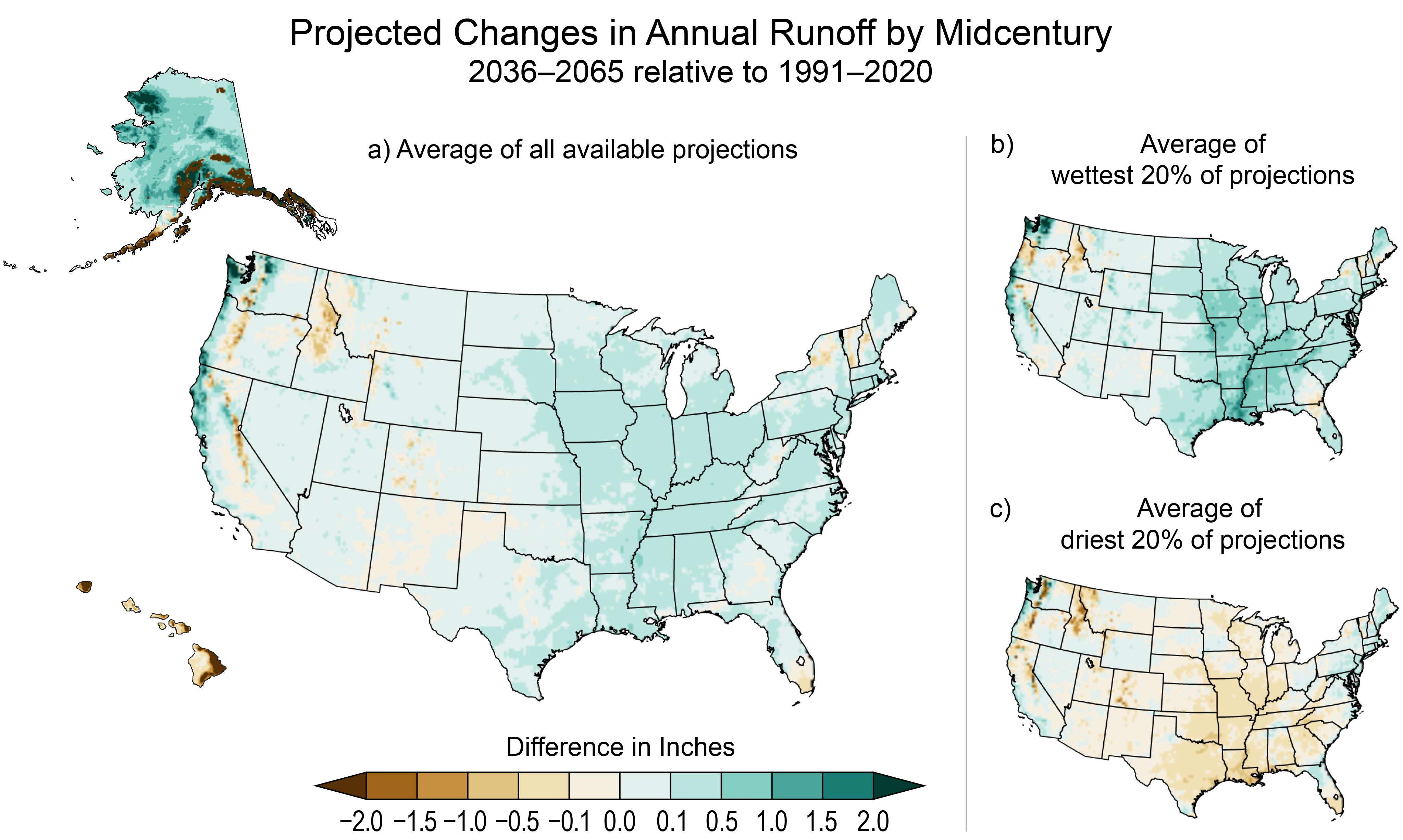The NCA5, or Fifth National Climate Assessment, is part of the Congressionally-mandated National Climate Assessment series that is released approximately every four years by the US Global Change Research Program. These reports bring together teams of professionals to synthesize knowledge about current and projected trends in global climate change to provide an authoritative source on the state of climate knowledge in the US.
According to the US Global Change Research Program:
“The findings in [the NCA5] are based on a comprehensive review and assessment of information sources determined to meet the standards and documentation required under the Information Quality Act and the Foundations for Evidence-Based Policymaking Act of 2018, including peer-reviewed literature, other literature, Indigenous Knowledge, other expert and local knowledge, and climate data processed and prepared by NOAA’s Technical Support Unit… [The] NCA5 was thoroughly reviewed by Federal Government experts, external experts, and the public multiple times throughout the report development process. An expert external review was performed by an ad hoc committee of the National Academies of Sciences, Engineering, and Medicine.”
For more information, see NCA5 Appendix 1: Assessment Development Process; Appendix 2: Information Quality; and Appendix 3: Scenarios and Datasets.
The NCA5 consists of the following sections:
- Overview
- Physical Science Chapters
- National Topic Chapters
- Regional Chapters
- Response Chapters
- Focus on… Features
- Appendices
- Glossary of Terms
- Artwork and Gallery
These chapters are further broken down into a series of Key Messages, which are the takeaway points of each chapter; these statements summarize the current and projected state of the topic in question and discuss their significance for future climate. Each Key Message is followed by a measure of confidence, which is determined by the “type, amount, quality, strength, and consistency of evidence” as well as the consistency and ability of methods to evaluate this evidence (NCA5: Front Matter). Many Key Messages are also given a measure of likelihood, which measures the degree of certainty based on statistical analysis of “observed or projected results or on the authors’ expert judgment” (NCA5: Front Matter).
For example, this table could be interpreted as follows:
Based on this information, the Northern Great Plains is likely to experience severe droughts and wildfire and the authors have high confidence in this projection based on data and literature reviews; the Northern Great Plains region will be very likely to experience extreme floods, and the authors have high confidence in this projection as well. Meanwhile, authors could not determine a measure of likelihood for increases in hail frequency and size, but based on available data, they have medium confidence that this projection is accurate.
The NCA5 Key Messages Tool, created as part of the NC CASC’s 2024 Rapid Climate Assessment Program (RCAP), aims to summarize the Fifth National Climate Assessment (NCA5) for each state in the NC CASC region as it relates to three topics: Water, Precipitation, and Drought; Agriculture and Land Use; and Communities and Management.
Water, Precipitation, and Drought: This section discusses water as a resource as well as climate-driven changes in precipitation and resulting events, such as drought.
Agriculture and Land Use: This section discusses agriculture in each region, in addition to climate-driven impacts on agriculture and land-based industries.
Communities and Management: This section synthesizes information on a region's communities that are at disproportionate risk of climate change and/or leading efforts to mitigate impacts from climate change. It also discusses regional management and strategies for a variety of climate-related challenges.

The tool output synthesizes information from the following chapters - when applicable to the state and topic in question - to provide a summary of relevant NCA5 data and projections:
- Chapter 4: Water
- Chapter 7: Forests
- Chapter 8: Ecosystems
- Chapter 11: Agriculture
- Chapter 16: Indigenous Peoples
- Chapter 25: Northern Great Plains
- Chapter 26: Southern Great Plains
- Chapter 28: Southwest
Note: Key Messages quoted in output tables are direct quotes from the NCA5, while other summary content may be paraphrased; sources can be found in parentheses at the end of the sentence in all cases.






































































